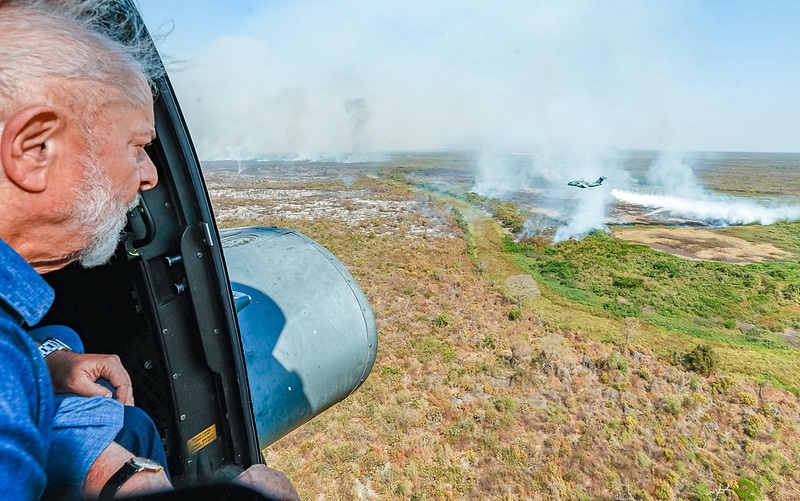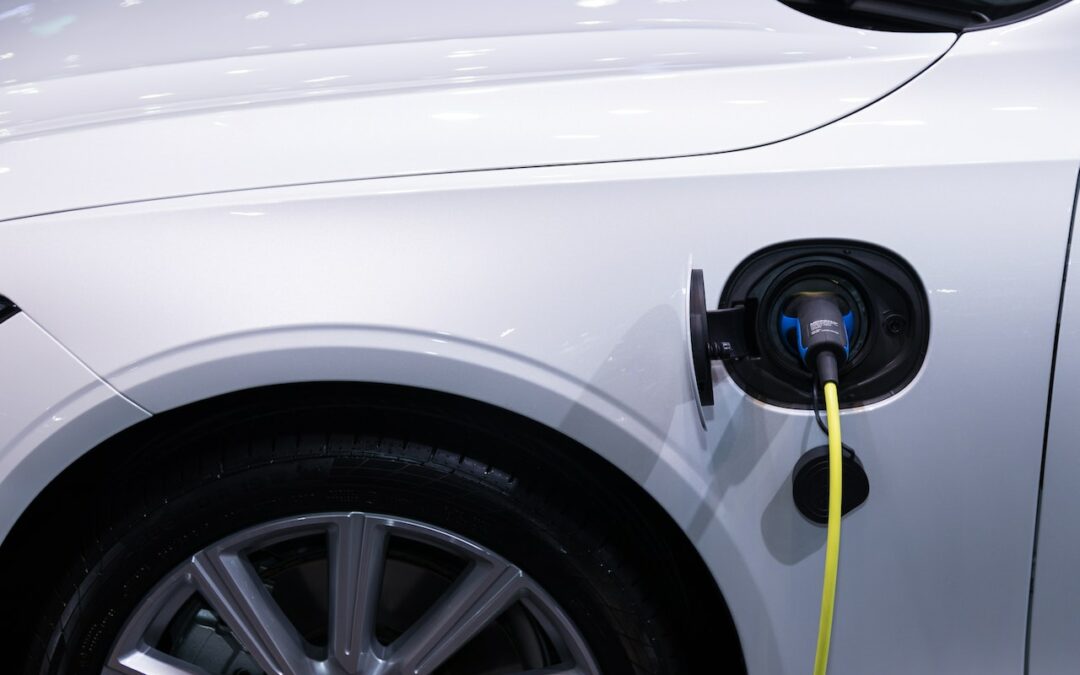
by Komoneed | Sep 16, 2024
Brazil is facing its worst drought on record, fueled by widespread deforestation and wildfire destruction in the Amazon and surrounding regions, scientists say. The destruction hinders the area’s natural water cycle, especially its crucial “flying river” phenomenon. As the trees in the Eastern Amazon and Cerrado regions absorb rainfall brought about by moisture coming from […]
The post Deforestation and Wildfires in Brazil Contributing to ‘Most Intense and Widespread Drought in History’ appeared first on EcoWatch.

by Grace Ebert | Sep 16, 2024
For photographer Ryan Imperio, the October 2023 solar eclipse ushered in a rare opportunity to capture the progression of Baily’s beads.
Do stories and artists like this matter to you? Become a Colossal Member today and support independent arts publishing for as little as $7 per month. The article A Brilliant Image of the Solar Eclipse Wins the 2024 Astronomy Photographer of the Year appeared first on Colossal.

by Komoneed | Sep 13, 2024
Today’s quote comes from fashion author and educator Sass Brown, who points out the high…
The post Earth911 Inspiration: Fast Fashion Isn’t Cheap appeared first on Earth911.

by Komoneed | Sep 13, 2024
Clean Energy, Clean Air
jschoshinski
Thu, 09/12/2024 – 14:33
Sometimes you can smell it. A distinct chemical odor, or perhaps something burning. It might make you cough, cause your eyes to water, or irritate your skin. The air might feel heavy or seem hazy. These tangible signs of poor air quality are the result of high levels of particulate matter (PM) and toxic gasses in the air, like carbon monoxide, nitrogen dioxide, sulfates, nitrates, ammonia, black carbon, and dust.
The unseen effects of air pollution are even worse. Air pollutants like PM can enter the lungs and the bloodstream, and were classified as carcinogenic by the World Health Organization in 2013. Air pollution is the world’s largest environmental health risk, accounting for one in eight deaths annually, 95 percent of which occur in low- and middle-income countries. Indeed, air quality is intertwined with many development challenges including health, food security, economic, and equality issues.
To mitigate air pollution in developing countries, we need to examine its causes in local contexts and support solutions that are affordable, sustainable, and reliable. While the sources of air pollution differ from place to place, a portion of it globally stems from burning fossil fuels, which power everything from businesses to vehicles to homes. A global transition to clean energy will have enormous benefits to air quality, biodiversity, global health, and prosperity. It will also help fight the climate crisis by lowering greenhouse gas (GHG) emissions, slowing the pace of global warming, and reducing climate shocks.
In recognition of International Day of Clean Air for Blue Skies, USAID is highlighting three examples of how clean energy initiatives are benefiting air quality and other development gains in partner countries:
Clean Cooking for Clean Air
Across the globe, one third of families cook with polluting fuels like wood, coal, and dung, contributing to two percent of GHG emissions annually and causing deadly indoor air pollution. In Nepal, the dependence on polluting fuels leads to 24,000 deaths per year, with victims more likely to be women given their societal role in preparing meals. More than 65 percent of rural households rely on firewood, which means women have to collect heavy bundles of wood and carry them home, light fires, and cook meals while inhaling smoke. This is not only time-consuming and detrimental to health, but also harmful to the environment, depleting Nepal’s forests and making the environment more susceptible to flooding, landslides, and other climate disasters.
To help the Government of Nepal reach its goal of having 25 percent of households adopt electric cooking, or e-cooking, by 2030, USAID is investing in local solutions. For example, the USAID Urja Nepal project awarded a grant to The Women Network for Energy and Environment (WoNEE), who trained Female Community Health Volunteers (FCHVs) in the Tanahun district of the Gandaki province to become e-cooking champions. The FCHVs worked with women leaders in local government, women-led banking cooperatives, and community organizations to increase the adoption of e-cooking. In combination with another grant implemented by the Ajummery Bikas Foundation, Urja Nepal trained 300 people and converted 1,459 households to clean cooking.
Image
At 72 years young, Hemkala Timalsina brews a cup of her favorite tea on her new induction stove.
Photo credit: USAID/Sushant Maharajan.
Thanks to a promotional campaign spearheaded by WoNEE, Hemkala Timalsina was able to rapidly become familiar with her new appliance. Hemkala appreciates how quickly the induction stove can brew up a cup of chai, saving her time for other activities. Women like Hemkala also lead awareness-building campaigns about the benefits of clean cooking, debunk misconceptions, and perform cooking demonstrations.
Going Electric
There are more than 7 million registered vehicles in Pakistan, and their emissions contribute to the country’s poor air quality. Poor air quality is the second-greatest threat to human health in Pakistan. USAID is helping improve the quality of air and life in the country by introducing electric vehicles (EVs), an increasingly popular choice for Pakistani households given the high cost of fuel. USAID is working with the Government of Pakistan to expand the market for electric vehicles by developing emissions standards and policies to support the EV industry, building capacity of policy makers and research and development workers, and facilitating private sector investment in renewable and innovative energy solutions.
To put this into practice, USAID is facilitating ezBike, the country’s first electric bike sharing startup through the Pakistan Private Sector Energy Project, to catalyze the country’s e-motorbike market. USAID’s investments in clean and renewable energy in Pakistan will not only drastically improve air quality, but will also create new jobs, save people money, and improve lives.
Image
ezBike, a startup in Islamabad, is working to electrify the motorbike market in Pakistan.
Photo Credit: Misbah uz Zaman Khan Asher for USAID
Energy Efficient Homes and Businesses
One of the most impactful ways for a community to work toward a cleaner, greener future is to use less energy and transition to cleaner sources. However, making the switch is not always accessible.
Wood burning stoves and diesel-powered vehicles produce smoke and exhaust—visible reminders of our contributions to air pollution. Yet, the electricity consumed in homes and businesses also contributes to GHG emissions and air pollution.
That’s why, in Serbia, USAID is implementing the Better Energy project, which seeks to improve energy efficiency and increase the use of renewable energy resources at the municipal level, working closely with the Serbian Ministry of Mining and Energy. In the town of Kladovo, the project helped install 110 rooftop solar panels to power a large biomass heating plant, which will significantly reduce operating costs and generate 80 MW per year. Residents of Kladovo attest that the air is cleaner now that the plant is using solar power.
In the town of Valjevo, directly west of Kladovo, USAID co-financed updates to four old apartment buildings that were built before energy efficiency standards came into practice. With retrofitting, building residents report energy and cost savings of 30 percent.
Image
Before (left) and after (right) photo of one of four apartment buildings that were retrofitted in Valjevo, Serbia, with the support of USAID Better Energy.
Photo Credit: USAID Better Energy
Milovan, one of the residents in a retrofitted building, shared what a difference it made. “Last year we had two [heaters], one in our bedroom and the other in the living room. This year, one was enough to heat the entire apartment.”
In Serbia, old and inefficient buildings account for an estimated 40 percent of total energy consumption, so the potential savings and benefits for air quality are vast. Commercial banks have taken note of the success of these activities, and have started piloting loan programs to homeowner associations to scale energy efficiency interventions in their buildings.
These are just a few examples of how USAID works across the globe to support cleaner air through the clean energy transition in sectors like household energy, transportation, and the power sector. With smart partnerships and investments like these, USAID can make impacts across air quality, health, poverty, gender equity and social inclusion, ecosystem degradation, and climate.
Clean energy will benefit our air, and clean air will benefit our health: a win-win solution.
Teaser Text
To mitigate air pollution in developing countries, we need to examine its causes in local contexts and support solutions that are affordable, sustainable, and reliable.
Publish Date
Thu, 09/12/2024 – 12:00
Author(s)
Jane Clifford
Hero Image
Power Africa Nigeria.jpg
Blog Type
Blog Post
Strategic Objective
Mitigation
Integration
Region
Global
Topic
Air Quality
Emissions
Climate
Climate Change Integration
Inclusive Development
Energy
Clean or Renewable Energy
Energy Efficiency
Health
Locally-Led Development
Private Sector Engagement
Green Cities
Country
Nepal
Serbia
Pakistan
Sectors
Energy
Show Download Link
On





